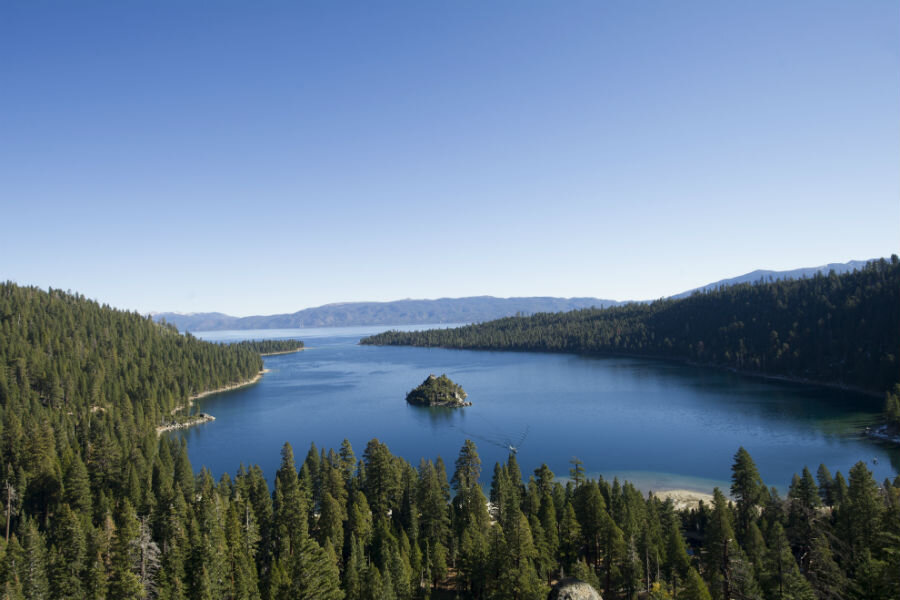Why Lake Tahoe is so blue (and how to measure it)
Loading...
Lake Tahoe does not get its iconic blue tint because the water is so clear. Instead, the lake’s blueness comes from the amount of algae in the water, a fact researchers were surprised to discover when they first set out to quantify just how blue Lake Tahoe is.
A postdoctoral researcher from University of California, Davis, Shohei Watanabe came up with the idea to create a Blueness Index, a way of measuring what factors contribute to the lake’s brilliant color using data from a NASA Jet Propulsion Lab research buoy, and an instrument that captures light.
“Though it's really quite subjective, you can now put a number on blueness,” says Geoffrey Schladow, director of the UC Davis Tahoe Environmental Research Center, who worked with Watanabe on the study, in a phone interview.
For decades, conservation efforts have focused on water clarity to restore Lake Tahoe to its prime, which Dr. Schladow places before the "building boom" in the 1950s and 60s, when rapid development caused the lake to lose some of its brilliance. Advocates for Lake Tahoe feared dust and sediment from construction would affect the lake’s clarity, and thus, it’s azure glow.
But the researchers found that clarity and blueness are, in fact, separate. In creating the Blueness Index, Watanabe and his colleagues found the lower the algal concentration, the bluer the lake. How clear the water appears does not contribute to how blue the lake is.
“This does not mean that clarity should be dismissed,” said Watanabe in the report. “Rather, it shows that algae concentrations and nutrient input should be managed more closely to truly keep Tahoe blue and clear.”
According to the report, clarity is controlled by sediment, while blueness is controlled by algal concentration, which in turn is driven by the level of nutrients (nitrogen and phosphorus) available to the algae. The less nutrients, the less algae, and the bluer the lake.
Drought in the region has reduced the flow of water (including sediment and nutrients) entering the lake from rivers and creeks, creating perfect conditions for a very blue Lake Tahoe.
“Less nutrients washed into lake, nutrients that helped algae to grow," Schladow says of the drought. "So nature has shown us what happens if nutrients get into the lake. In that way, Lake Tahoe has shown us what it needs to be blue and clear again."






